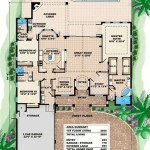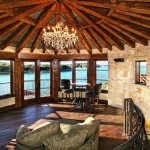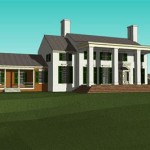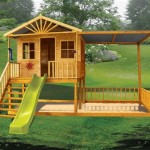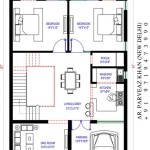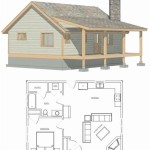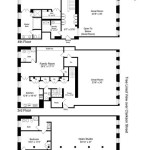Canadian Home Designs: Exploring Diverse Floor Plan Options
Canadian home design encompasses a wide range of architectural styles and functional floor plans, reflecting the country's diverse climates, geographical landscapes, and cultural influences. From traditional farmhouses to modern urban dwellings, the variety of available options allows homeowners to find designs that perfectly suit their lifestyles and aesthetic preferences. Understanding the key aspects of Canadian home design, particularly concerning floor plans, is crucial for anyone considering building or renovating a property in Canada.
Floor plans are fundamental blueprints that dictate the layout of a home. They illustrate the arrangement of rooms, the placement of walls, windows, doors, and other structural elements. A well-designed floor plan optimizes space utilization, ensures comfortable living conditions, and enhances the overall value of the property. In Canada, floor plan considerations often include factoring in energy efficiency, weather protection, and accessibility.
Traditional Canadian Floor Plan Styles
Traditional Canadian home designs often draw inspiration from European architectural styles, adapted to suit the Canadian environment. Key characteristics include symmetrical facades, steeply pitched roofs to handle heavy snowfall, and large windows to maximize natural light. Common floor plan layouts in traditional Canadian homes include:
The Colonial Revival: This style typically features a central hallway with symmetrically arranged rooms on either side. The living room and dining room are often located at the front of the house, while the kitchen and utility areas are at the back. Bedrooms are usually situated on the upper floor. Open concept layouts are typically not a feature of this style, emphasizing compartmentalized living spaces. The emphasis is on formal living and structured room divisions.
The Farmhouse: Farmhouses prioritize functionality and practicality. Floor plans often include a large, eat-in kitchen that serves as the heart of the home. Mudrooms are common features, providing a space to remove outerwear and footwear before entering the main living areas. Bedrooms are often located on the upper floor, while a den or home office may be located on the main floor. Farmhouse floorplans reflect a focus on family interaction and practical living.
The Victorian: Victorian homes are known for their intricate detailing and elaborate ornamentation. Floor plans can be more complex, with multiple levels, turrets, and bay windows. The main floor often includes a formal living room, dining room, and library, while the upper floors house the bedrooms and bathrooms. Victorian floor plans can be challenging to adapt to modern living due to their intricate layouts and use of space.
Regardless of the specific style, traditional Canadian floor plans generally emphasize distinct living spaces, providing privacy and separation between different activities. While open concept designs have gained popularity in recent years, traditional layouts remain a popular choice for those seeking a more formal and structured living environment.
Modern Canadian Floor Plan Trends
Modern Canadian home design reflects a shift towards open concept living, energy efficiency, and sustainable building practices. Contemporary floor plans are often characterized by clean lines, minimalist aesthetics, and an emphasis on natural light. Key trends in modern Canadian floor plan design include:
Open Concept Living: Open concept floor plans combine the kitchen, living room, and dining room into a single, unified space. This creates a sense of spaciousness and encourages social interaction. Open concept layouts are particularly popular in smaller homes and condominiums, as they maximize the feeling of usable space. The kitchen often serves as a focal point, with a large island providing ample counter space and seating.
Flex Spaces: Modern floor plans often incorporate flexible spaces that can be adapted to suit different needs. These spaces may serve as home offices, playrooms, or guest bedrooms, depending on the homeowner's requirements. Flex spaces are often designed with minimal built-in features, allowing for maximum flexibility in terms of furniture placement and usage. The flexibility of these spaces makes them well-suited to changing family needs.
Main Floor Master Suites: Main floor master suites are becoming increasingly popular, particularly among older homeowners who prefer to avoid stairs. These suites typically include a bedroom, bathroom, and walk-in closet, all located on the main floor. Main floor master suites offer convenience and accessibility, allowing homeowners to age in place comfortably. This design feature is especially valued for its accessibility and convenience.
Energy Efficiency: Energy efficiency is a major consideration in modern Canadian home design. Floor plans are often designed to maximize natural light and ventilation, reducing the need for artificial lighting and air conditioning. Strategic window placement, proper insulation, and efficient heating and cooling systems are all key elements of energy-efficient floor plans. Building materials with high R-values are frequently used to improve the thermal performance of the building envelope.
Universal Design Principles: Universal design principles are incorporated into many modern Canadian floor plans to ensure accessibility for people of all ages and abilities. Features such as wider doorways, barrier-free showers, and ramps can make a home more accessible and comfortable for those with mobility challenges. Implementing universal design principles from the outset can significantly enhance the long-term usability and value of a home.
Modern Canadian floor plans prioritize functionality, flexibility, and sustainability. These designs reflect a growing awareness of the importance of energy efficiency and accessibility, creating homes that are comfortable, convenient, and environmentally responsible.
Factors Influencing Floor Plan Choices in Canada
Several factors influence the choice of floor plan for a Canadian home. These considerations encompass climate, lifestyle, budget, and lot size. A comprehensive understanding of these factors can help homeowners make informed decisions when selecting or designing a floor plan.
Climate Considerations: Canada's diverse climate zones necessitate floor plans that can withstand extreme temperatures, heavy snowfall, and high winds. In colder regions, floor plans may prioritize insulation, airtight construction, and efficient heating systems. Entrances are often strategically located to minimize heat loss. In warmer regions, floor plans may focus on natural ventilation, shading, and outdoor living spaces.
Lifestyle Considerations: The lifestyle of the homeowner is a key determinant of floor plan choices. Families with young children may prioritize open concept living and play areas, while those who work from home may need dedicated office space. Empty nesters may prefer smaller, low-maintenance homes with fewer rooms. Identifying specific lifestyle needs and preferences is crucial for selecting a floor plan that meets those requirements.
Budget Constraints: The budget for building or renovating a home is a significant factor in floor plan decisions. Complex floor plans with multiple levels, intricate detailing, and expensive materials can significantly increase construction costs. Simplifying the floor plan, choosing affordable materials, and minimizing square footage can help reduce costs without sacrificing functionality or aesthetics. Balancing design preferences with budgetary constraints is vital for a successful project.
Lot Size and Orientation: The size and orientation of the building lot also influence floor plan options. Smaller lots may require more compact floor plans, while larger lots can accommodate more expansive designs. The orientation of the lot relative to the sun can affect the placement of windows and outdoor living spaces, maximizing natural light and solar gain. Considering the lot's characteristics early in the planning process can optimize the design and functionality of the home.
Local Building Codes and Regulations: Floor plan designs must comply with local building codes and regulations, which can vary from province to province and municipality to municipality. These codes address safety, accessibility, and energy efficiency, among other things. Consulting with a qualified architect or building professional is essential to ensure that the floor plan meets all applicable requirements. Adhering to building codes is critical for legal compliance and ensuring the safety of the occupants.
Selecting the right floor plan for a Canadian home requires careful consideration of various factors. By understanding the influence of climate, lifestyle, budget, and lot size, homeowners can make informed decisions that result in a home that meets their needs and enhances their quality of life.
In conclusion, Canadian home design floor plans offer a diverse range of options, catering to different lifestyles, climates, and aesthetic preferences. From traditional styles that emphasize distinct living spaces to modern designs that prioritize open concept living and energy efficiency, there is a floor plan to suit every need. Understanding the key elements of Canadian floor plan design and the factors that influence their selection is essential for building or renovating a home that is both functional and aesthetically pleasing.

Free Home Plans Bungalow Style House Craftsman

Canadian House Plans Home Floor Designs The Designers

Top 100 Most Popular Canadian House Plans Drummond

50 Favorite Alberta House Plans Prairie And Ranch

Callie S House Bungalow Plans Plan Gallery Floor

House The Canadian Plan Green Builder Plans

The Thunder Bay Canadian Home Designs House Plans Bungalow Design

Prefabricated Homes Prefab Houses Double S Bc

Custom House Plans Stock Garage Home Small Free

Top 100 Most Popular Canadian House Plans Drummond

